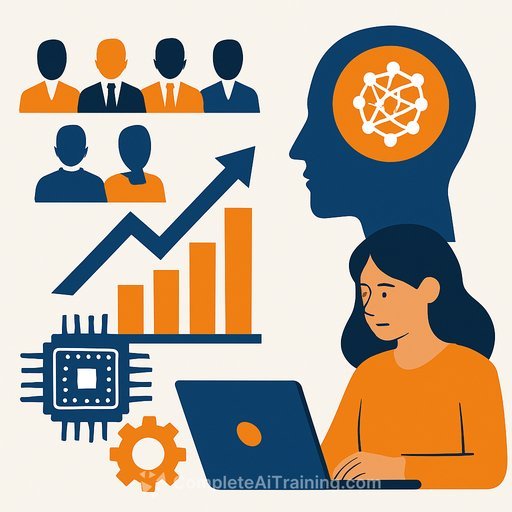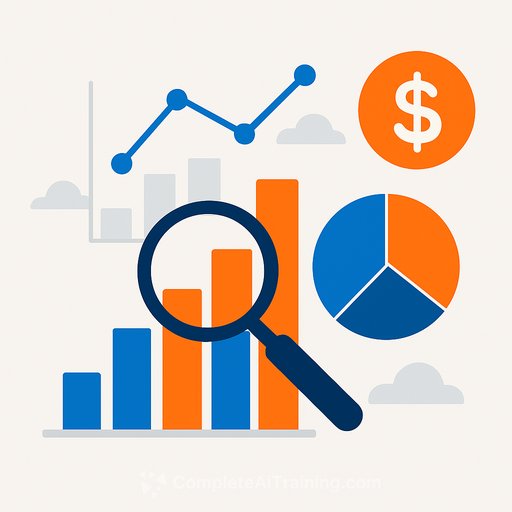AI is keeping the US economy out of a recession
For two years, the US has sidestepped a downturn despite higher rates, tariff shocks, and global tension. The engine keeping growth alive: AI investment.
As one Wall Street economist put it, "AI has kept the economy out of a recession." AI-driven capex in data centers and chips has offset tighter financial conditions, sustaining demand where credit would normally slow it.
The numbers that matter
Bank of America Research estimates AI-related capex added 1.3 percentage points to Q2 GDP. Small businesses are joining the party too, with payments to tech services up nearly 7% year over year in September.
Goldman Sachs estimates hyperscalers now account for more than a quarter of all S&P 500 capex, growing at a 75% annual clip. Office construction has slumped since rate hikes began in 2022, while data center projects have exploded on the back of equity gains in the "Magnificent Seven."
Why higher rates aren't biting
The usual policy channel is off. Apollo's Torsten Sløk argues the AI boom has "broken" monetary transmission because capex is being funded by soaring equity valuations, not debt. If you're financing with stock, higher interest costs don't stop you.
That dynamic has allowed the Fed to begin easing even with inflation above target - effectively "buying insurance for the labor market." Early productivity gains from AI make that trade-off easier to live with, for now.
What this means for finance leaders
- Cost of capital is shifting: For AI buildouts, equity beta matters more than SOFR. Stress-test capex plans against equity drawdowns, not just rate paths.
- Capex is bifurcated: "There is basically no growth in corporate capex outside of AI." Expect continued weakness in non-AI categories (e.g., office), strength in compute, networking, and facilities tied to data centers.
- Monetary policy is less effective on investment: Tighter policy won't cool equity-funded projects. Watch overall financial conditions, not just the policy rate.
- Inflation and margins: Productivity gains help, but AI demand can lift input prices (compute, GPUs, power, real estate near substations). Bake that into bids and contracts.
- Labor planning: Fed easing aims to protect jobs while growth holds. Expect ongoing hiring in AI-adjacent roles and selective freezes elsewhere.
Portfolio and credit positioning
- Equities: Tilt toward semis, AI infrastructure, power and thermal management, optical networking, and select data center REITs. Be cautious on office CRE exposure.
- Credit: Outside AI, capex is flat - underwrite for slower top-line growth. Favor issuers with AI-linked revenues or secured cash flows to data center demand.
- Risk management: Equity-funded capex can stall if valuations crack. Hedge for a volatility spike that could delay projects and compress orders.
What to watch next
- Hyperscaler capex guidance (Microsoft, Meta, Alphabet, Amazon) and supply-chain backlogs.
- Productivity prints and GDP contributions from structures and equipment tied to compute.
- SMB tech spend indicators and software seat growth as adoption spreads beyond Big Tech.
- Data center power availability, interconnection queues, and utility capex plans.
- Office vacancy rates and starts for a read on non-AI construction drag.
- FOMC commentary on easing while inflation is above target and any shift in balance-sheet policy.
There's a clear mood in global policy circles: AI optimism is high, and it's rewriting a few rules. As long as equity markets keep funding the buildout, growth stays supported and rate hikes bite less than they used to.
Useful references
Practical next steps for finance teams
- Rebuild your capex hurdle framework to include equity sensitivity alongside WACC.
- Lock in long-lead infrastructure (power, cooling, real estate near fiber/power nodes) before scarcity premiums rise.
- Map revenue exposure to AI demand, including second-order beneficiaries (security, data plumbing, integration).
If you're evaluating tools to accelerate finance workflows under this regime, see a curated list of AI tools for finance.
Your membership also unlocks:





